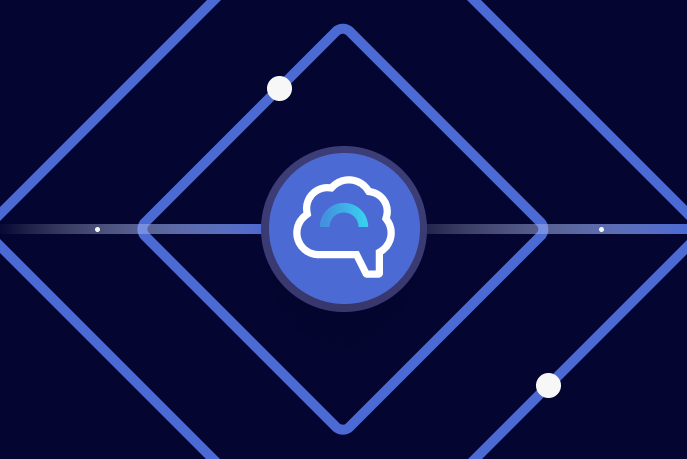Ahorra un 25 % (o incluso más) en tus costes de Kafka | Acepta el reto del ahorro con Kafka de Confluent
Technology
Data Products, Data Contracts, and Change Data Capture
Change data capture is a popular method to connect database tables to data streams, but it comes with drawbacks. The next evolution of the CDC pattern, first-class data products, provide resilient pipelines that support both real-time and batch processing while isolating upstream systems...
Unlock Cost Savings with Freight Clusters–Now in General Availability
Confluent Cloud Freight clusters are now Generally Available on AWS. In this blog, learn how Freight clusters can save you up to 90% at GBps+ scale.
Contributing to Apache Kafka®: How to Write a KIP
Learn how to contribute to open source Apache Kafka by writing Kafka Improvement Proposals (KIPs) that solve problems and add features! Read on for real examples.
Unlocking Data Insights with Confluent Tableflow: Querying Apache Iceberg™️ Tables with Jupyter Notebooks
This blog explores how to integrate Confluent Tableflow with Trino and use Jupyter Notebooks to query Apache Iceberg tables. Learn how to set up Kafka topics, enable Tableflow, run Trino with Docker, connect via the REST catalog, and visualize data using Pandas. Unlock real-time and historical an...
Chopped: AI Edition - Building a Meal Planner
Dinnertime with picky toddlers is chaos, so I built an AI-powered meal planner using event-driven multi-agent systems. With Kafka, Flink, and LangChain, agents handle meal planning, syncing preferences, and optimizing grocery lists. This architecture isn’t just for food, it can tackle any workflow.
The AI Silo Problem: How Data Streaming Can Unify Enterprise AI Agents
Salesforce has Agentforce, Google launched Agentspace, and Snowflake recently announced Cortex Agents. But there’s a problem: They don’t talk to each other…
Shifting Left: How Data Contracts Underpin People, Processes, and Technology
Explore how data contracts enable a shift left in data management making data reliable, real-time, and reusable while reducing inefficiencies, and unlocking AI and ML opportunities. Dive into team dynamics, data products, and how the data streaming platform helps implement this shift.
Optimizing Serverless Stream Processing with Confluent Freight Clusters and AWS Lambda
This blog outlines how to build cost-effective, high-throughput serverless streaming applications using Confluent Cloud Freight clusters for data ingestion and AWS Lambda functions for processing.
Powering AI Agents with Real-Time Data Using Anthropic’s MCP and Confluent
Model Context Protocol (MCP), introduced by Anthropic, is a new standard that simplifies AI integrations by providing a secure and consistent way to connect AI agents with external tools and data sources…
Confluent for VS Code Simplifies Real-Time Data Streaming Projects for Developers
We’re excited to announce that Confluent for VS Code is now Generally Available with Confluent Cloud and Confluent Platform! This integration with Visual Studio Code is open source, readily accessible on the VS Code Marketplace, and supports all forms of Apache Kafka® deployments.
New in Confluent Cloud: Tableflow, Freight Clusters, Apache Flink® AI Enhancements, and More
Confluent Cloud Q1 ’25 introduces Tableflow, Freight clusters, and Flink AI enhancements
New with Confluent Platform 7.9: Oracle XStream CDC Connector, Client-Side Field Level Encryption (EA), Confluent for VS Code, and More
This blog announces the general availability of Confluent Platform 7.9 and its latest key features: Oracle XStream CDC Connector, Client-Side Field Level Encryption (EA), Confluent for VS Code, and more.
Tableflow Is GA: Unifying Apache Kafka® Topics with Apache Iceberg™️ and Delta Lake Tables in a Few Clicks
Tableflow represents Kafka topics as Apache Iceberg® (GA) and Delta Lake (EA) tables in a few clicks to feed any data warehouse, data lake, or analytics engine of your choice
Meet the Oracle XStream CDC Source Connector
Confluent's new Oracle XStream CDC Premium Connector delivers enterprise-grade performance with 2-3x throughput improvement over traditional approaches, eliminates costly Oracle GoldenGate licensing requirements, and seamlessly integrates with 120+ connectors...
How To Delete a Topic in Apache Kafka®: A Step-By-Step Guide
Learn how to delete topics in Apache Kafka safely and efficiently. Explore step-by-step instructions, best practices, and important considerations for managing Kafka topics.
Protect Your Data With Self-Managed Keys (BYOK) Enhancements
Discover how Confluent’s BYOK for Enterprise Clusters and support for EKMs enhance security, and efficient data streaming in our latest blog.












